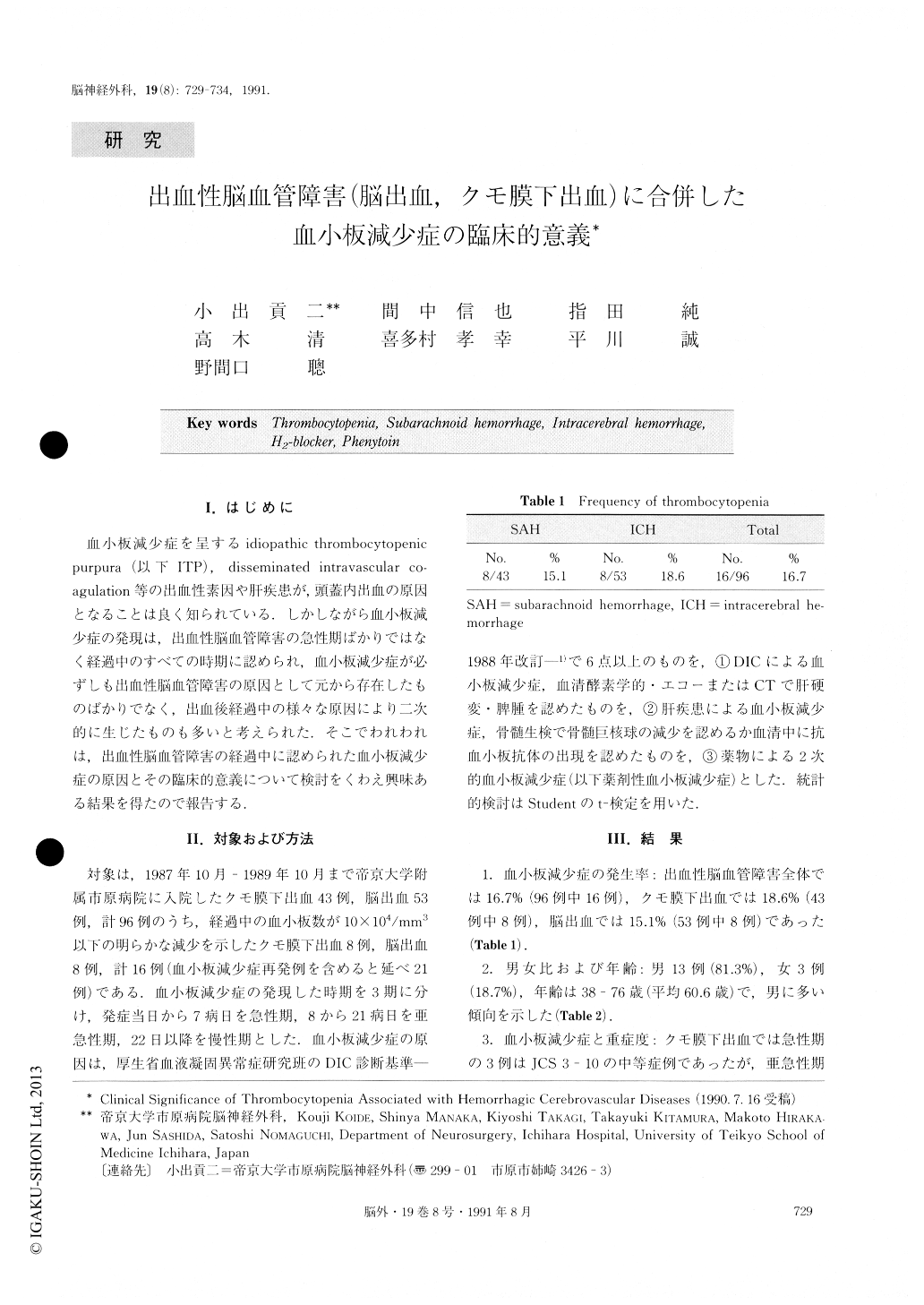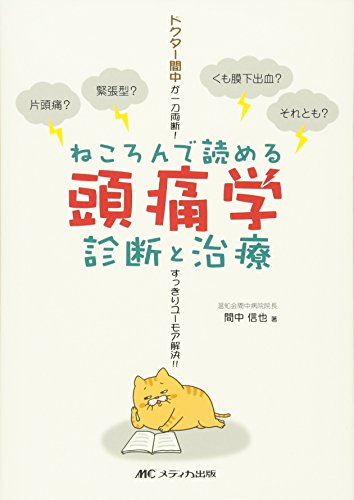I.はじめに 血小板減少症を呈するidiopathic thrombocytopenicpurpura(以下ITP),disseminated intravascular co—agulation等の出血性素因や肝疾患が,頭蓋内出血の原因となることは良く知られている.しかしながら血小板減少症の発現は,出血性脳血管障害の急性期ばかりではなく経過中のすべての時期に認められ,血小板減少症が必ずしも出血性脳血管障害の原因として元から存在したものばかりでなく,出血後経過中の様々な原因により.二次的に生じたものも多いと考えられた.そこでわれわれは,出血性脳血管障害の経過中に認められた血小板減少症の原因とその臨床的意義について検討をくわえ興味ある結果を得たので報告する.
2 0 0 0 OA 頭痛診療ツールとしての鍼灸技法の応用
- 著者
- 間中 信也
- 出版者
- 日本神経学会
- 雑誌
- 臨床神経学 (ISSN:0009918X)
- 巻号頁・発行日
- vol.52, no.11, pp.1299-1302, 2012 (Released:2012-11-29)
- 参考文献数
- 10
- 被引用文献数
- 1 1 1
We use two oriental medical techniques in headache management. One is topological microstimulation, and the other is acupuncture point BL10 (Tianzhu) block. 1. Topological microstimulation The topological microstimulation apparatus delivers programmed fluctuating electrical signals to electrodes placed on the distal portion of the limbs, where meridians are concentrated. Topological microstimulation adjusts "qi-blood-fluid" circulating through meridians. "Qi-blood-fluid" is a virtual concept of oriental medicine that means 3 elements (qi, blood, and colorless body fluid). Topological microstimulation induces natural healing power through the bio-homeostatic function, and reduces chronic intractable pain. 2. Acupuncture point BL10 (Tianzhu) block Tianzhu as a meridian point is located at the intersection of the superior nuchal line of the occipital bone and lateral border of the trapezius. This site is located in the superficial layer of the trunk of the greater occipital nerve. Tianzhu block has therapeutic effects on the trigeminocervical complex. As a result, various types of headache are relieved. Tianzhu block was performed in 50 patients in our clinic, and marked effects were observed in 6 patients, moderate effects in 22, slight effects in 19, and no effects in 3. According to the type of headache, this block was effective in 47% of patients with tension-type headache, 38% of those with migraine, 50% of those with chronic daily headache, and 71% of those with neck and/or shoulder pain. Conclusion Various somatic and mental stresses induce headache and functional somatic syndrome, i.e., Tianzhu syndrome. Acupuncture is useful and can be actively recommended for the management of intractable headache such as complicated headache due to Tianzhu syndrome.
1 0 0 0 OA 脳神経外科医が知っておくべき頭痛の知識
- 著者
- 間中 信也
- 出版者
- 日本脳神経外科コングレス
- 雑誌
- 脳神経外科ジャーナル (ISSN:0917950X)
- 巻号頁・発行日
- vol.21, no.10, pp.771-778, 2012 (Released:2012-11-09)
- 参考文献数
- 16
頭痛の診療は, 国際頭痛分類第2版と, 慢性頭痛の診療ガイドラインを活用して行う. 片頭痛には多くの急性期治療と予防療法が存在する. トリプタン (セロトニン1B/1D受容体作動薬) は片頭痛の特異的治療薬であり, 現在 (2011年9月), スマトリプタン, ゾルミトリプタン, エレトリプタン, リザトリプタン, ナラトリプタンの5種類, 錠剤, 口腔錠, 点鼻液, 皮下注射液ののべ10製剤が使用可能である. 満足するトリプタンの効果を得るには, 的確な診断と, アロディニア出現前の早期服用が求められる. 頻回使用 (月10日以上) により薬物乱用頭痛を招くので, そのおそれがある場合は片頭痛予防療法を併用する.
1 0 0 0 頭痛研究の歴史 (特集 頭痛・疼痛)
- 著者
- 間中 信也
- 出版者
- 医学書院
- 雑誌
- 神経研究の進歩 (ISSN:00018724)
- 巻号頁・発行日
- vol.46, no.3, pp.331-340, 2002-06

